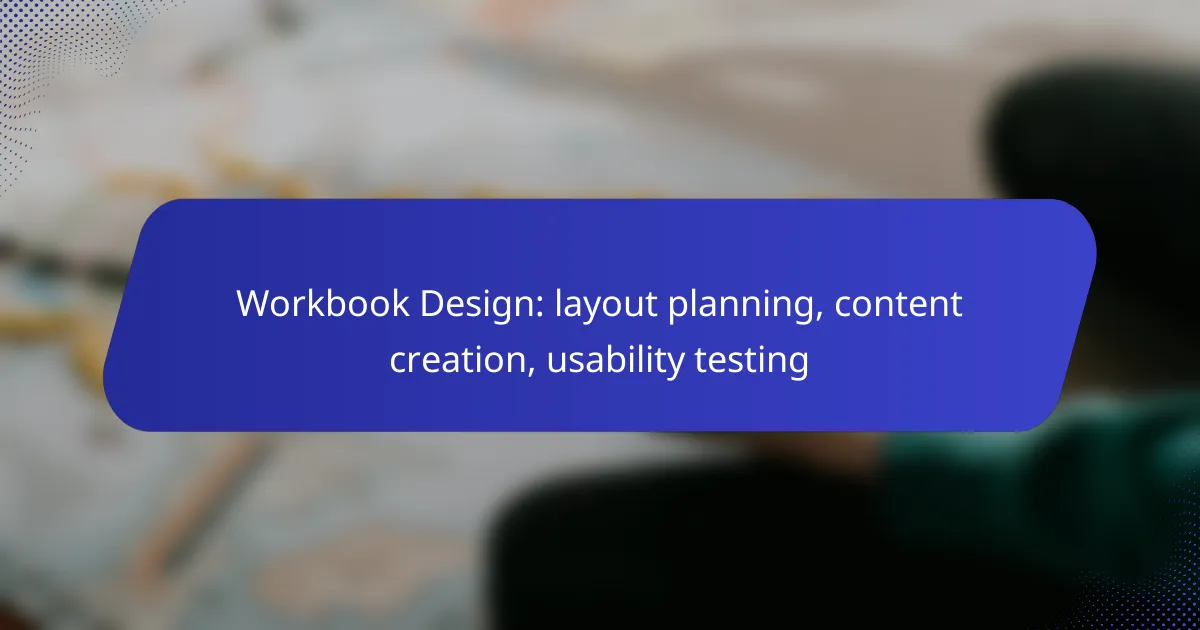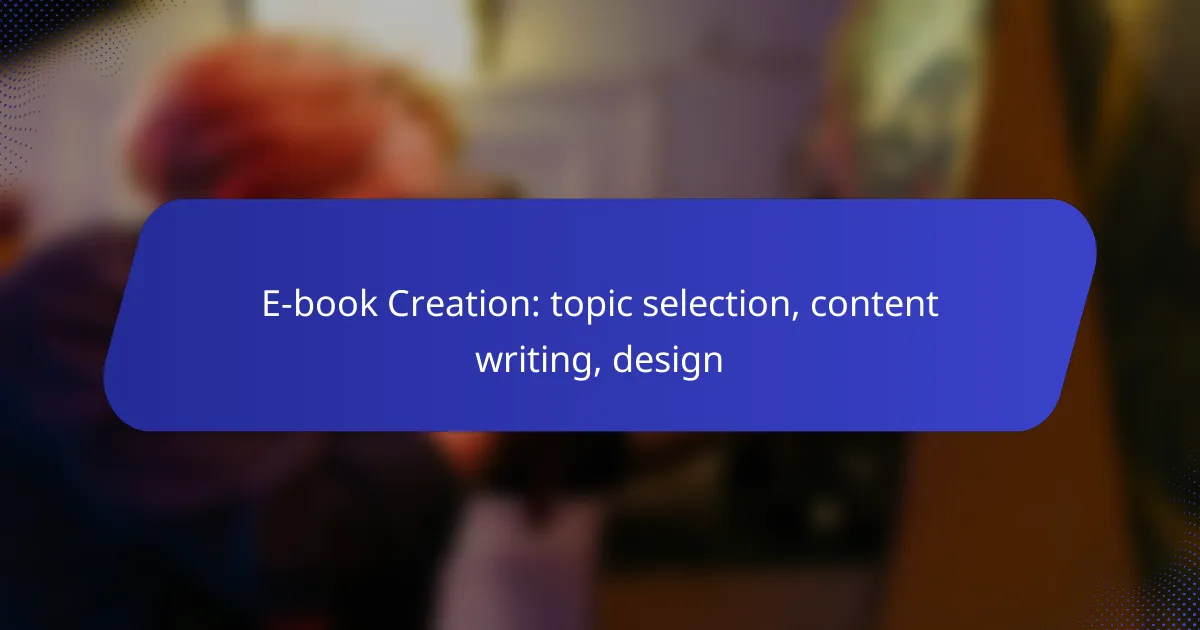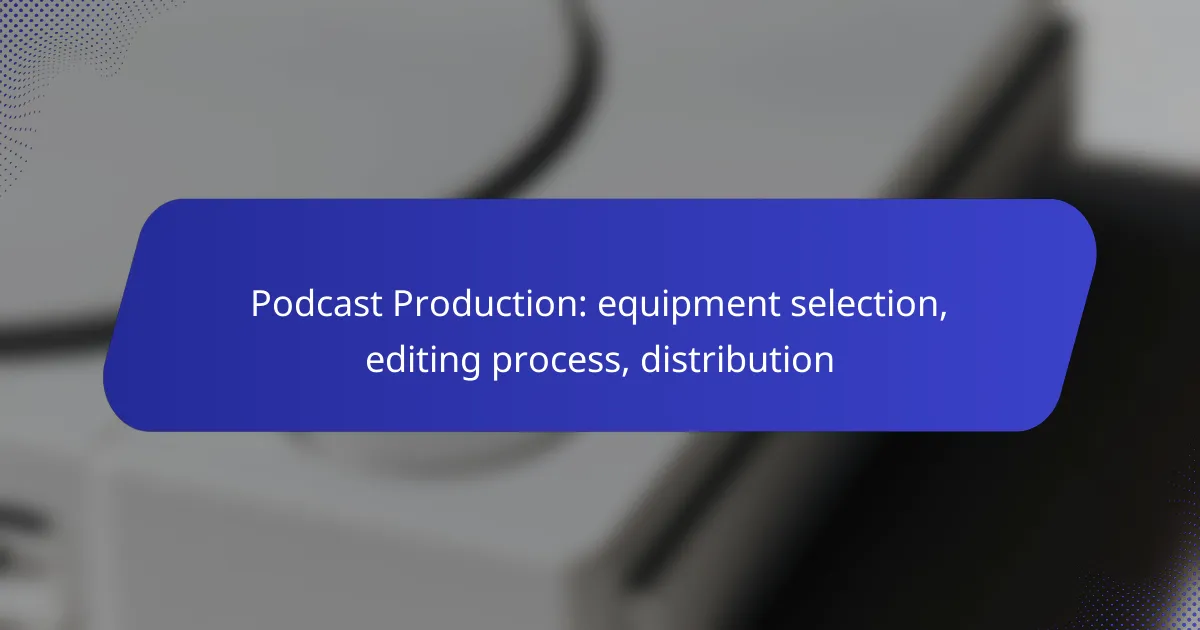Planning a successful virtual summit requires careful attention to speaker selection, agenda creation, and marketing strategies. Choosing engaging speakers who align with the summit’s theme is crucial for capturing the audience’s interest. Additionally, a well-structured agenda that includes key topics and interactive segments enhances participant engagement. Finally, effective marketing through diverse channels can significantly increase attendance and overall event success.

How to select speakers for a virtual summit?
Selecting speakers for a virtual summit involves identifying knowledgeable individuals who can engage the audience effectively. Focus on their expertise, ability to connect with participants, and overall fit with the summit’s theme.
Identify industry experts
Start by researching leaders in your industry who have a strong reputation and relevant experience. Look for individuals who have published works, spoken at other events, or hold positions in recognized organizations. Consider using platforms like LinkedIn to find potential speakers.
Compile a list of candidates and categorize them based on their areas of expertise. This will help ensure a well-rounded selection that covers various topics relevant to your audience.
Evaluate speaker engagement
Assess potential speakers based on their previous engagement levels with audiences. Look for metrics such as audience feedback, social media following, and interaction rates during past presentations. Engaging speakers can significantly enhance the overall experience of your summit.
Consider reaching out to past event organizers to gather insights about the speakers’ effectiveness and their ability to connect with attendees.
Consider diversity and inclusion
Incorporating a diverse range of speakers can enrich the summit experience by providing varied perspectives. Aim for a mix of backgrounds, experiences, and viewpoints to foster inclusive discussions that resonate with a broader audience.
Evaluate your speaker list for gender, ethnicity, and professional diversity to ensure representation. This approach not only enhances the content but also reflects the values of your organization.
Assess speaker availability
Once you have a shortlist of potential speakers, check their availability for the summit dates. Early communication is crucial, as popular speakers may have packed schedules. Provide them with clear details about the event format and expectations.
Consider offering flexible time slots or alternative dates to accommodate their schedules, increasing the likelihood of securing high-profile speakers.
Review past performance
Investigate the past performance of potential speakers by reviewing recordings of their previous talks or presentations. Pay attention to their speaking style, audience engagement, and content delivery. This can help you gauge how well they might perform at your summit.
Additionally, seek feedback from attendees of their past events to understand their impact and effectiveness. This information can guide your final selection, ensuring you choose speakers who will resonate with your audience.
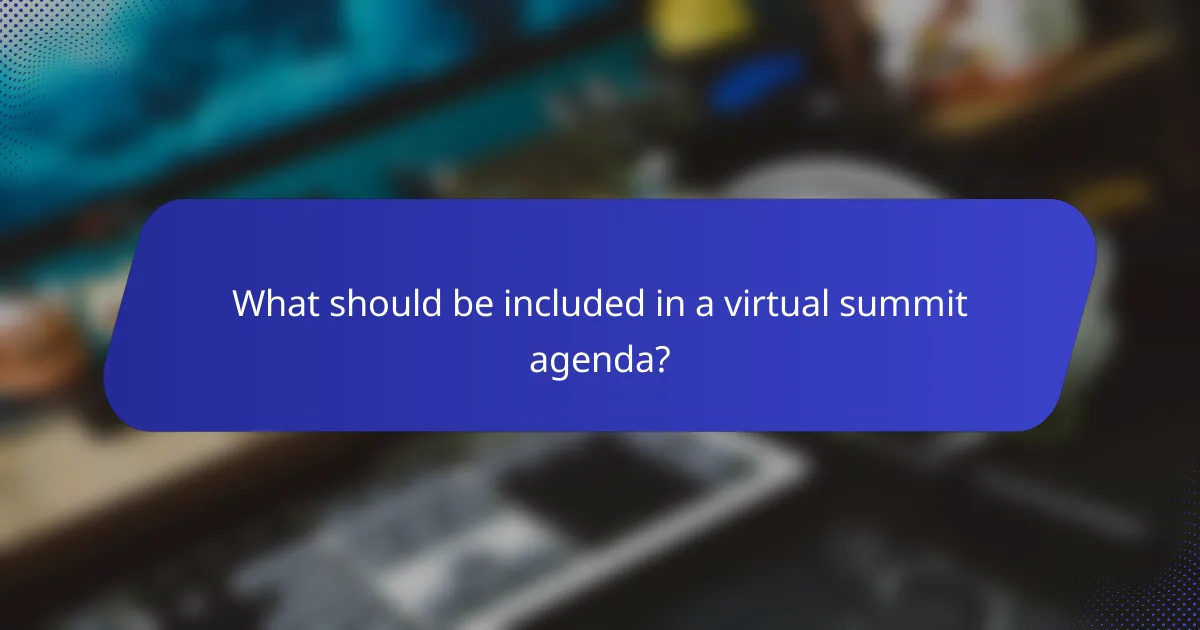
What should be included in a virtual summit agenda?
A virtual summit agenda should encompass key topics, time allocations for sessions, networking opportunities, and Q&A segments. This structure ensures a comprehensive experience that engages participants and maximizes the value of the event.
Define key topics and themes
Identifying key topics and themes is crucial for a focused virtual summit agenda. Consider the interests of your target audience and current trends in your industry to select relevant subjects. Aim for a mix of foundational concepts and cutting-edge ideas to cater to a diverse audience.
For example, if your summit is centered on digital marketing, you might include themes like SEO strategies, social media trends, and content marketing innovations. This variety keeps the content fresh and appealing to different participants.
Allocate time slots for sessions
Effective time allocation for sessions is vital to maintain audience engagement. Typically, sessions should last between 30 to 60 minutes, allowing for in-depth discussions without overwhelming attendees. Make sure to include buffer times for transitions and technical issues.
Consider using a consistent format across sessions, such as 45-minute presentations followed by 15-minute discussions. This structure helps participants know what to expect and allows for smoother transitions between topics.
Include networking opportunities
Networking opportunities are essential for fostering connections among participants. Incorporate dedicated time slots for informal discussions, breakout rooms, or virtual lounges where attendees can interact. This enhances the overall experience and encourages collaboration.
For instance, you could schedule a 30-minute networking session after keynotes or panel discussions. This gives attendees a chance to discuss insights and share experiences, making the summit more interactive and engaging.
Plan for Q&A sessions
Q&A sessions are critical for addressing participant queries and enhancing engagement. Allocate time for audience questions after each presentation or panel discussion, typically around 10 to 15 minutes. This encourages interaction and allows speakers to clarify complex topics.
To streamline the process, consider using a chat feature where attendees can submit questions in advance. This helps speakers prepare and ensures that the most relevant questions are addressed during the session.
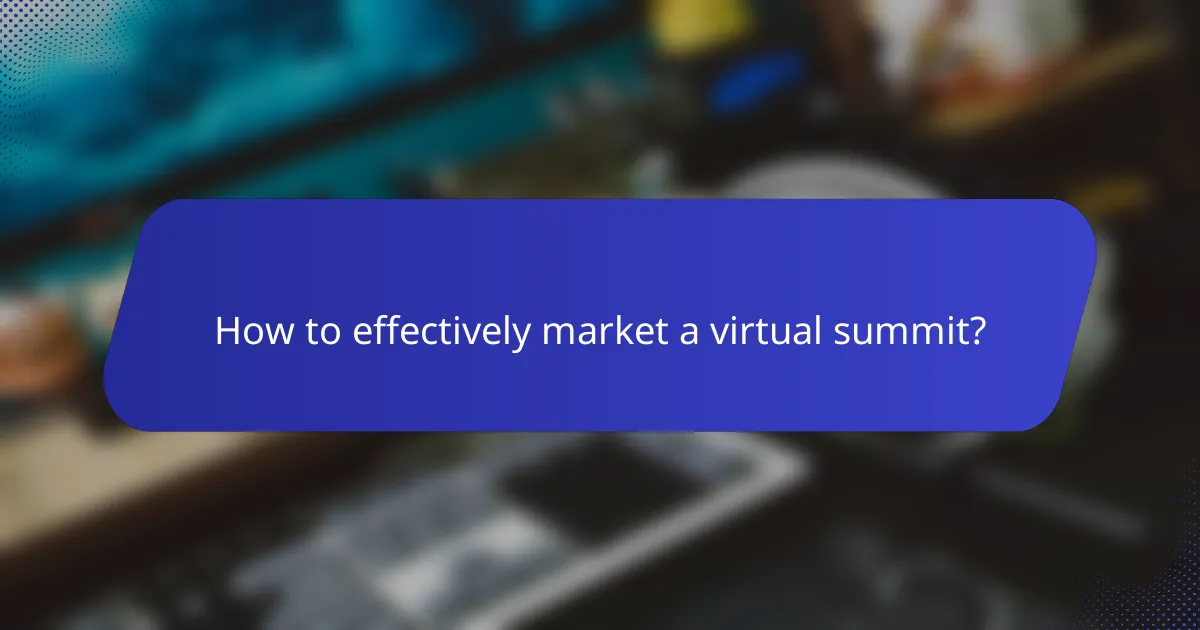
How to effectively market a virtual summit?
To effectively market a virtual summit, focus on engaging your target audience through various channels and strategies. A well-rounded approach that includes social media, email marketing, speaker collaboration, and incentives can significantly boost attendance and engagement.
Utilize social media platforms
Social media platforms are essential for promoting your virtual summit. Create dedicated event pages on platforms like Facebook, LinkedIn, and Twitter to share updates and engage with potential attendees. Regularly post engaging content, such as speaker highlights and countdowns, to maintain interest.
Consider using paid advertising to reach a broader audience. Target specific demographics and interests that align with your summit’s theme to maximize your marketing efforts. Use eye-catching visuals and clear calls to action to encourage sign-ups.
Leverage email marketing campaigns
Email marketing is a powerful tool for reaching your audience directly. Build a targeted email list by offering valuable content related to your summit’s topics. Send out a series of emails that include event details, speaker announcements, and registration links.
Segment your email list to tailor messages based on audience interests. Use engaging subject lines and concise content to increase open rates. Consider sending reminder emails as the event date approaches to boost attendance.
Collaborate with speakers for promotion
Collaborating with your speakers can amplify your marketing efforts. Encourage them to share the event on their platforms, leveraging their existing audience. Provide them with promotional materials, such as graphics and suggested posts, to make sharing easier.
Host a pre-event webinar or Q&A session featuring your speakers to generate buzz. This not only showcases their expertise but also gives potential attendees a taste of what to expect, increasing the likelihood of registration.
Implement early bird registration discounts
Offering early bird registration discounts can incentivize attendees to sign up sooner. This strategy helps gauge interest and build momentum leading up to the event. Consider offering a discount that is significant enough to encourage quick decisions, such as 20-30% off the regular price.
Promote these discounts prominently in your marketing materials and on your website. Set clear deadlines for early registration to create urgency, and remind your audience as the deadline approaches to drive last-minute sign-ups.
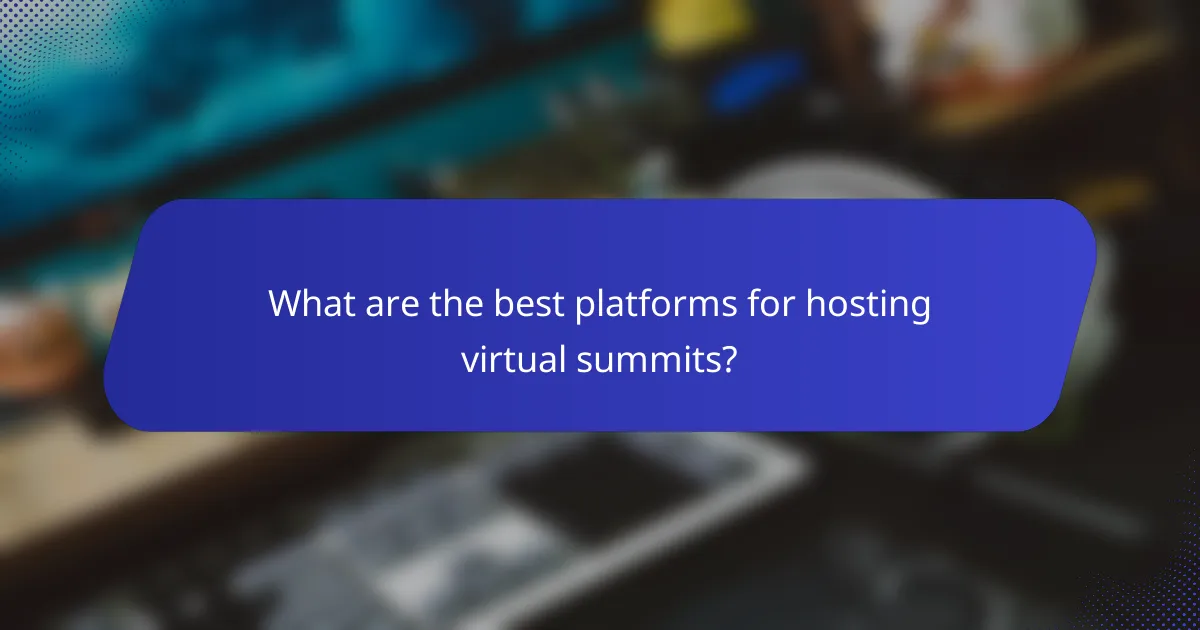
What are the best platforms for hosting virtual summits?
The best platforms for hosting virtual summits include Zoom, Hopin, and Webex, each catering to different needs and audience engagement levels. Choosing the right platform depends on the type of interaction desired, the size of the audience, and specific event requirements.
Zoom for webinars
Zoom is widely recognized for its user-friendly interface and reliability, making it ideal for webinars and presentations. It supports large audiences, with capabilities to host hundreds to thousands of participants, depending on the plan.
Key features include breakout rooms for smaller discussions, polls for audience engagement, and recording options for later access. Ensure you have a solid internet connection to avoid disruptions during the event.
Hopin for interactive experiences
Hopin excels in creating immersive and interactive virtual events, allowing for networking opportunities and multiple session types. It features stages for keynote speeches, breakout rooms for workshops, and expo areas for sponsors.
This platform is suitable for larger summits where attendee interaction is crucial. Consider using Hopin if you want to provide a comprehensive experience that mimics in-person events, but be prepared for a steeper learning curve for both organizers and participants.
Webex for corporate events
Webex is tailored for corporate environments, offering robust security features and integration with various enterprise tools. It is particularly effective for professional settings, allowing for seamless collaboration and communication.
With features like virtual backgrounds, real-time translation, and high-definition video, Webex is a strong choice for formal summits. However, it may not be as engaging for casual or creative events, so assess your audience’s needs before selecting this platform.

What criteria should be used for speaker selection?
Effective speaker selection for a virtual summit hinges on several key criteria including expertise, presentation skills, and audience engagement potential. Prioritizing these factors ensures that the speakers not only convey valuable information but also captivate the audience throughout the event.
Expertise and Experience
When selecting speakers, their expertise in the relevant field is paramount. Look for individuals with a strong background, such as industry leaders, researchers, or practitioners who have demonstrated knowledge and experience. This can include published authors, recognized professionals, or those with significant achievements in their area.
Additionally, consider the speaker’s experience in public speaking. A speaker who has delivered talks at similar events or has a history of engaging audiences will likely perform better. Review past presentations or request video samples to gauge their speaking style and effectiveness.
Relevance to Audience
Understanding the audience’s interests and needs is crucial for selecting speakers who resonate with them. Conduct surveys or analyze past event feedback to identify topics that engage your attendees. Choose speakers who can address these interests and provide actionable insights.
For example, if your audience consists of marketing professionals, speakers should have a strong grasp of current trends and tools in marketing. This relevance will enhance audience engagement and satisfaction during the summit.
Presentation Skills
Strong presentation skills are essential for keeping the audience engaged. Evaluate potential speakers on their ability to communicate clearly, use visuals effectively, and interact with the audience. A speaker who can tell a compelling story or present complex ideas simply will likely hold the audience’s attention better.
Consider conducting interviews or watching recorded talks to assess their delivery style. Look for speakers who can adapt their presentations to different formats, whether it’s a live Q&A, panel discussion, or a pre-recorded session.
Availability and Commitment
Ensure that selected speakers are available for the event dates and are committed to promoting the summit. Check their calendars and discuss their willingness to engage with the audience before and after the event. This commitment can enhance the overall experience for attendees.
Additionally, clarify expectations regarding their participation, including rehearsal times and promotional activities. This proactive approach helps avoid last-minute cancellations or scheduling conflicts.

